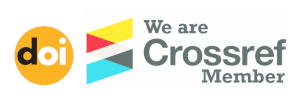The Importance of Affixation in Pashto Word Formation
په پښتو لغوي جوړښت کې د تاړو اوډون او ارزښت
Keywords:
Word formation, Morphology, Affixes, Primary affixes, Secondary affixesAbstract
The purpose of this research is to guide and help students and language learners with word structure and meaning awareness in Pashto. Words, learning, understanding, and efficiency have significant relationships and complement each other. Phonological research aids in the awareness of morphological structures and helps us understand the phonological variations that occur in the word formation process. Affixes play a very significant role in the production and articulation of words. The study and understanding of affixation help students in the word formation process in every language. Affixation is important and helpful for literature and linguistic students to distinguish and understand how new words are formed and what they mean. Affixes guide language beginners and speakers to consider words and their meanings structurally. Learning and understanding words help learners develop strong grammar, listening, writing, reading, and speaking skills. The specific purpose of this study is to understand the primary and secondary affixes and their characteristics in the word formation process of Pashto. In the formation of words in the Pashto language, prefixes always function as primary affixes, while suffixes are systematically and orderly enclosed by primary and secondary affixes.
Downloads
References
چمتو، م. ق. (۱۳۹۸). تشرېحي ژبپوهنه. کابل: جهان دانش خپرندویه ټولنه.
خوېشکی، م. ص. (۱۳۹۷). پښتو معاصر ګرامر. کابل: جهان دانش خپرندویه ټولنه.
څولیزی، م. ع. (۱۳۹۹). عمومي ژبپوهنه. کابل: جهان دانش خپرندویه ټولنه.
زیار، م. ا. (۱۳۸۴). پښتو پښویه. کابل: دانش خپرندویه ټولنه.
شېرزاد، م. آ.(۱۳۹۹). پښتو ګرامر مورفولوژي. کابل: نویسا خپرندویه ټولنه.
Angrayni, M. (2019). Students' Difficulties in Using Affixation (A Study In English Education Department Of UIN Ar-Raniry). [Doctoral dissertation, UIN Ar-Raniry Banda Aceh]. https://repository.ar-raniry.ac.id/id/eprint/8888/
Aronoff, M., & Fudeman, K. (2011). What is Morphology? (2nd ed.). Wiley-Blackwell. https://www.wiley.com/en-in/What+is+Morphology%3F%2C+2nd+Edition-p-9781444351767
Cook, M. J., (2016). How does learning about affixes (prefixes and suffixes) help English Language Learners (ELLS) understand the meaning and use of affixes? [Doctoral dissertation, Hamline University]. https://digitalcommons.hamline.edu/hse_all/4173
Bhatti, M. S., Iqbal, A., & Javed, Z. (2016). Improving vocabulary through affixes at secondary level. International E-Journal of Advances in Social Sciences, 2(6), 728-732. http://ijasos.ocerintjournals.org/en/download/article-file/261820 DOI: https://doi.org/10.18769/ijasos.280376
Gordon, P. (1985). Level-ordering in lexical development. Cognition, 21(2), 73–93. https://doi.org/10.1016/0010-0277(85)90046-0 DOI: https://doi.org/10.1016/0010-0277(85)90046-0
Gubair, D. M., & Ibrahim, R. O. (2019). Investigating the Role of Affixation in Learning and Understanding English Lexis. International Journal of Science and Research, 8(2), 2200-2206. https://paper.researchbib.com/view/paper/293810
Hamans, C. (2017). Language change and morphological processes. Yearbook of Poznan Linguistic Meeting, 3(1), 1–23. https://doi.org/10.1515/yplm-2017-0001 DOI: https://doi.org/10.1515/yplm-2017-0001
Orlando, B. A., Raivoso, D. J., & Adamo, X. A. (2017). Lexical Phonology and Morphology model Lexical Strata. [Doctoral dissertation, Pedagogical University of Maputo]
Pradita, I., & Sadiq, N. (2016). DEVELOPING STUDENT VOCABULARY WORKSHEET BY USING AFFIXES. Ahmad Dahlan Journal of English Studies, 3(1). Universitas Ahmad Dahlan. https://doi.org/10.26555/adjes.v3i1.3621 DOI: https://doi.org/10.26555/adjes.v3i1.3621
Silviana, E. (2020). A Study On Students' Ability Of English Affixes At The Fifth Semester Of English Language Education Of FKIP UIR. [Doctoral dissertation, Universitas Islam Riau]. https://repository.uir.ac.id/17324/
Kristel, V. G. (2020). Affixation in Morphology. In Oxford Research Encyclopedia of Linguistics. Oxford University Press. https://doi.org/10.1093/acrefore/9780199384655.013.678 DOI: https://doi.org/10.1093/acrefore/9780199384655.013.678
Zarei, A. A., Mousavi, S., & Hasani, M. T. (2014). The effect of the number of affixes on vocabulary learning of Iranian intermediate EFL students. International Journal of Language Learning and Applied Linguistics World. https://www.irangn.ir/article_view.php?rahgiri=414837658732342
Published on: 26-06-2024
Also Available On
How to Cite
Issue
Section
License
Authors contributing to this journal retain the copyright of their articles but agree to publish their articles under the terms of the Creative Commons CC-BY 4.0 License (http://creativecommons.org/licenses/by/4.0/) allowing third parties to copy and redistribute the material in any medium or format, and to remix, transform, and build upon the material, for any purpose, even commercially, under the condition that appropriate credit is given, that a link to the license is provided, and that they indicate if changes were made. They may do so in any reasonable manner, but not in any way that suggests the licensor endorses them or their use.


